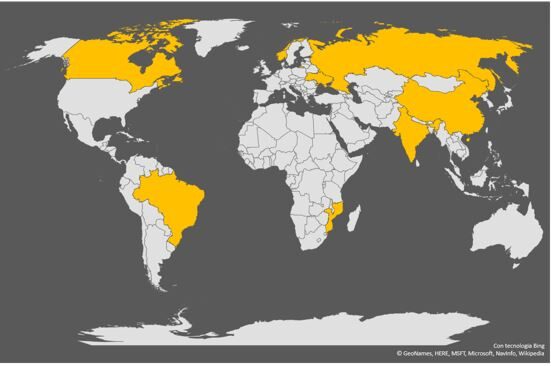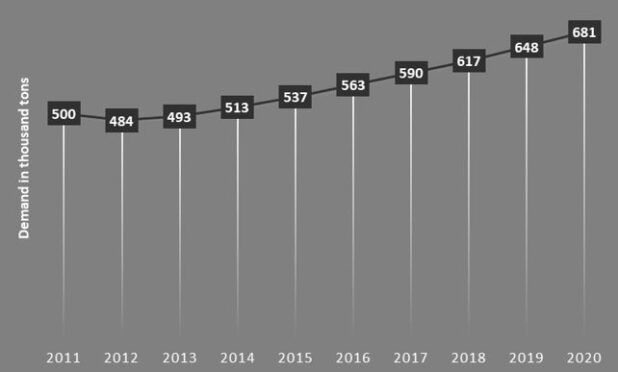Graphite: mineral of extremes
What Is Graphite?
Graphite is a very common mineral, which represents one of the different forms that carbon can take. It is defined as "mineral of extremes", since on one side it is extremely soft, splits with a slight pressure and has a low specific weight, while on the other side it is extremely resistant to heat and almost inert to contact with other materials. It is one of the strongest and hardest materials in the natural world. Furthermore, another main characteristic is that graphite contains elements typical of metals despite being a mineral. For example, it has good conductivity as well as lubricating properties. All specific features of metals and generally not very common in minerals.
Current and Future Use
Graphite has spread rapidly over the years because it is the element that forms the pencils' mines. Due to its "extreme" properties it is widely used in the field of metallurgy and production, but also for the creation of lubricants and rustproof solutions. It is exploited in both the energy sector for the creation of electrodes and the nuclear sector, as a neutron moderator or for absorbing radiation. It also plays an important role in the war production sector. Today there is no armaments sector that is not interested in graphite. Graphite sheets of infinitesimal thickness, called graphene, have been used to make the smallest transistors produced in the world. Graphene can also be used in the medical field, in order to make prostheses that are much more resistant. Recently, graphite has found ample space in the furnishing sector, where it is used to make furniture and floors. The future for this material seems to be positive. The opportunity of use and the demand for graphite have grown in recent years and probably will continue to grow as a result of the boom in electric vehicles (EVs). In fact, this material is an essential element in lithium ion batteries used to power electric vehicles. In addition to the excellent utility in the electric field, which could lead it to replace the more classic solutions in silicon, it could be used for energy storage systems and for making batteries more efficient than lithium ones, as well as in the aerospace industry, such as aircraft and other means of transport coating and in nano-technologies.

Where Does It Come From?
Present in nature in the form of mineral, graphite is obtained mainly from rich deposits. Graphite mines are found throughout the world. In 2018, Turkey had the world’s largest reserves of natural graphite, at approximately 90 million tons, followed by China and Brazil, with respectively 73 and 72 million tons. Other countries where this material can be found, even if in lower quantities, are Tanzania, Mozambique, India, Vietnam, Mexico, North Korea and Madagascar.

Figure 1: Main countries producing graphite in 2018 (Source: US Geological Survey)
Production
Regarding production (Figure 1), China is by far the largest producer, followed by Brazil, Canada and India. In 2017, production in China was around 625 million tons, increasing slightly to 630 in 2018. China has in fact accounted for about 70% of global graphite extractions in 2018. There are also mines throughout South America and Canada. Brazil is a good example. In 2018 the country produced 95 million tons of graphite, becoming the world's second-largest graphite producer. By contrast, Canada's graphite production remained the same between 2017 and 2018, reaching 40 million tons. Interest in Canada as a potential source of graphite has increased in recent years, particularly since Tesla said it wanted to procure the graphite it needs to produce lithium-ion batteries from North America. Moreover, India produced much less graphite than the top three producing countries in 2018, but it's still the world's fourth-largest producer of the metal. Its total output last year
came to 35 million tons, the same amount it put out in 2017. In Europe, however, the largest graphite producing countries in 2018 were Ukraine (20 million tons), Russia (17 million tons) and Norway (16 million tons). New graphite mines are also being developed in Madagascar, Mozambique, Namibia and Tanzania. During 2017, some of the mines in Tanzania started producing, as well as in Mozambique, where a graphite mine project started operations in early 2018. Mozambique made a huge leap in 2018, going from only 300,000 tons in 2017 to 20 million tons last year, becoming in this way the world's fifth-largest producer of graphite. In general, this is a sector whose production is growing. In 2018, approximately 930 million tons were produced compared to 897 million tons in 2017.
To Conclude...
Figure 2 shows the growth in the world graphite demand between 2011 and 2018, highlighting its constant increase over the years. In addiction it offers a forecast until 2020 of future levels. Thanks to its properties and to the many sectors in which graphite can be exploited, it is likely that the opportunities for use, demand and consequently production in the future will grow more and more and this is why we think it may be interesting to know this material, whose market could be one of the next to explode.
